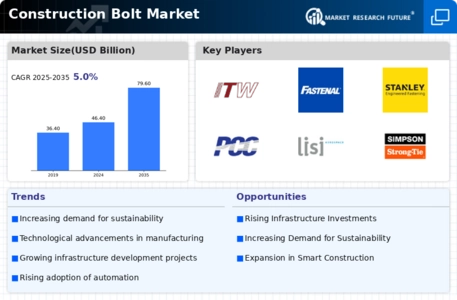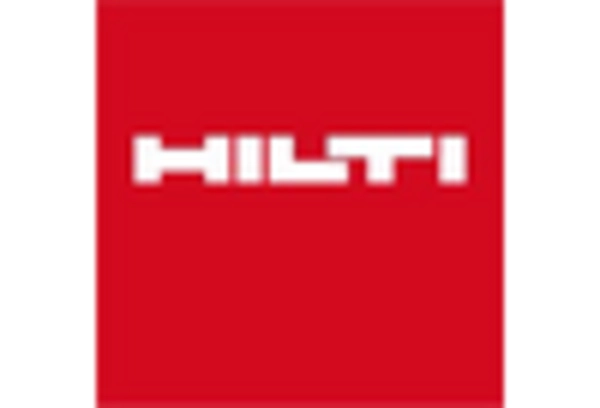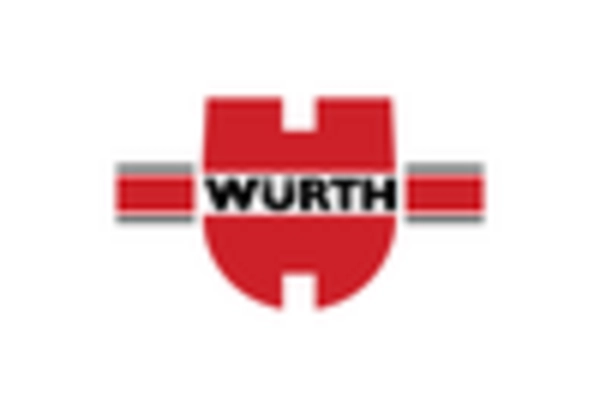Regulatory Compliance
The stringent regulatory environment surrounding construction safety and quality standards is a crucial driver for the Construction Bolt Market. Compliance with these regulations necessitates the use of high-quality fastening solutions that meet specific performance criteria. As safety regulations become more rigorous, construction companies are increasingly required to utilize bolts that adhere to these standards, which in turn drives demand within the market. Recent statistics indicate that the construction industry is expected to allocate a significant portion of its budget to ensure compliance with safety regulations, thereby positively impacting the Construction Bolt Market. This trend suggests that manufacturers who prioritize compliance in their product offerings may gain a competitive edge.
Sustainability Trends
The increasing emphasis on sustainability within the construction sector is emerging as a significant driver for the Construction Bolt Market. As builders and contractors seek to minimize their environmental impact, there is a growing preference for eco-friendly materials and practices. This trend is leading to the development of bolts made from recycled materials or those that can be easily reused. Market data suggests that the demand for sustainable construction practices is expected to grow by approximately 6% over the next few years. Consequently, manufacturers in the Construction Bolt Market are likely to adapt their product lines to align with these sustainability goals, thereby enhancing their market position.
Technological Innovations
Technological advancements in manufacturing processes and materials are significantly influencing the Construction Bolt Market. Innovations such as the development of high-strength bolts and corrosion-resistant coatings are enhancing the performance and longevity of construction bolts. The introduction of automated manufacturing techniques has also improved production efficiency, reducing costs and lead times. According to recent data, the market for advanced fastening solutions is expected to witness a growth rate of around 5% annually, driven by these technological improvements. As construction projects become more complex, the demand for specialized bolts that meet stringent safety and performance standards is likely to rise, thereby benefiting the Construction Bolt Market.
Infrastructure Development
The ongoing expansion of infrastructure projects appears to be a primary driver for the Construction Bolt Market. Governments and private entities are investing heavily in roads, bridges, and buildings, which necessitates the use of high-quality construction bolts. For instance, the construction sector is projected to grow at a compound annual growth rate of approximately 4.5% over the next few years, indicating a robust demand for construction materials. This growth is likely to stimulate the need for durable and reliable fastening solutions, thereby enhancing the market for construction bolts. Furthermore, as urbanization continues to rise, the demand for new infrastructure will likely increase, further propelling the Construction Bolt Market.
Rising Construction Activities
The resurgence of construction activities across various sectors is likely to be a key driver for the Construction Bolt Market. With a notable increase in residential, commercial, and industrial construction projects, the demand for construction bolts is expected to rise correspondingly. Recent reports indicate that construction spending is projected to increase by approximately 7% in the coming years, reflecting a robust recovery in the sector. This uptick in construction activities not only boosts the demand for bolts but also encourages manufacturers to innovate and expand their product offerings. As a result, the Construction Bolt Market is poised for growth, driven by the overall expansion of construction activities.


















Leave a Comment